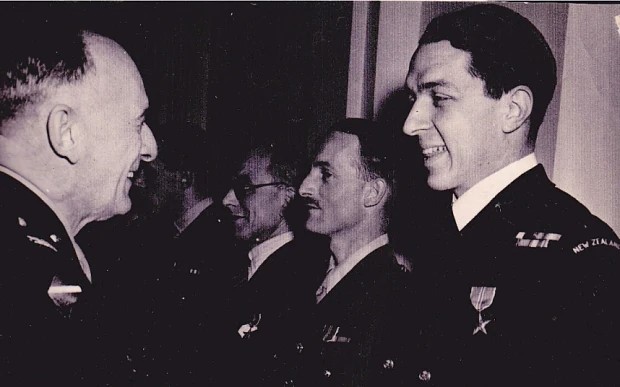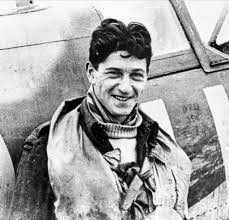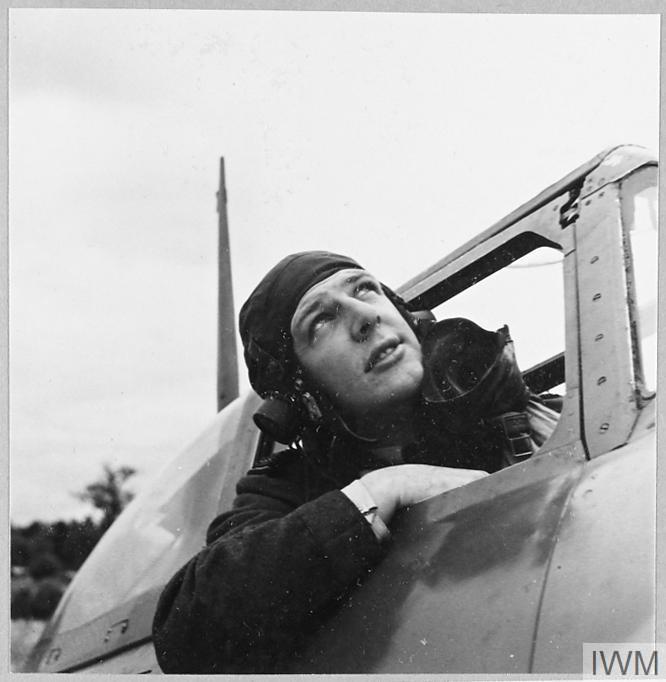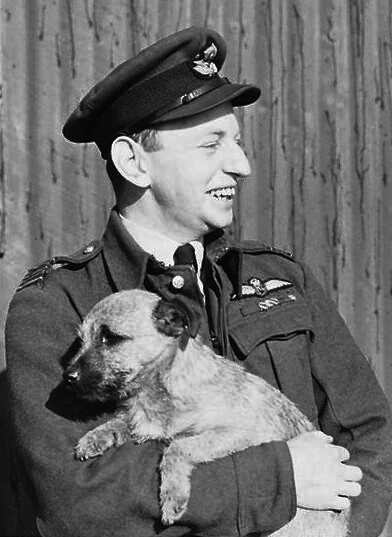Operations
Operations
New Zealanders on D-Day
The landings on the Normandy coast were made mainly by American, British, French and Canadian troops. But many Kiwis were serving with the Allied forces in the air and at sea and were directly involved on D-Day. They were witnesses to one of the decisive events in history.
Perhaps the first New Zealander involved in D-Day was Aucklander George Lawrence Hogben, a mathematician and Rhodes Scholar. His studies were cut short by the war, and he joined the British Navy in England. He had a key role in the sinking of the German battleship the Bismarck – as radar operator his role had been to supply the right co-ordinates to the attacking aircraft.

Lawrence Hogben (right) being presented with the Bronze Star
Hogben became a key member of the small British Naval weather team. The meteorologist later said: “It took courage for us to say ‘No’ on June 5; and it took courage to forecast ‘Yes’ for June 6. I was scared – I think we all were afraid of getting it wrong … We knew we were making history.” Hogben
Sir Arthur Coningham had been a rifleman in WWI before he became a pilot in the Royal Flying Corps. He went on to make a career in the RAF and by D-Day he oversaw the 2nd Tactical Air force, which provided close air support to the troops on the ground.

Sir Arthur Coningham standing on a perforated steel runway in the Italian theatre
shortly before returning to Britain to take up his duties as Air Officer Commanding No 2 Tactical Air Force. in 1944.
(Credit: IWM)
He had been knighted by then, for brilliant tactics while running a similar air force at El Alamein. And like at El Alamein, the Allies dominated the skies on D-Day. Air cover was vital, but Coningham was insistent the Air Force – not the Army – should be in charge of air support.
Some in the Army strongly disagreed, and like many others Coningham fell out with English Field Marshall Bernard Montgomery. Monty complained, “Coningham is violently anti-Army and despised by all soldiers; my Army commanders mistrust him and never want to see him.” But Supreme Allied Commander, General Dwight Eisenhower took Coningham’s side, dissolving the unnecessary layer of command above him.
As well as the airmen in Bomber Command, New Zealanders flew coastal patrols, fighters, fighter-bombers, transport aircraft and glider tugs as part of Operation Overlord.
Spitfire fighter pilot Johnny Houlton, leading a section of 485 (NZ) squadron, is credited with shooting down the first German aircraft of the battle, a Junkers Ju-88, near Omaha Beach.

Johnny Houlton standing beside a No. 485 Squadron Spitfire
At times, pilots complained that their biggest problem was their own naval gunfire. New Zealander Johnny Checkett’s Spitfire was driven off by naval gunfire. ‘Lots more bloody flak from our ships (then the Germans),’ he wrote in his logbook.
Several elaborate hoaxes were in play to confuse the German defenders as to where the Allied landing would be made. Both Operation Taxable and Operation Glimmer were combined air and naval operations designed to create fake radar impressions of naval missions heading to locations away from Normandy.
Glimmer was conducted by No. 218 Sq., flying six Short Stirling bombers on the operation, with one flown by F/L Arnold King. Fellow New Zealanders Ian Lock and Trevor Knapman piloted two additional airborne reserve aircraft.
Group Captain Desmond Scott now commanded the newly formed No. 123 Wing, made up of No. 609, 164, 183 and 198 Squadrons, which operated Hawker Typhoons. He later featured on the TV series New Zealand at War, recalling D-Day operation of “winkling out (German) radar stations on the French coast, which were bristling with anti-aircraft guns.”

Group Captain Desmond James Scott, DSO, OBE, DFC & Bar
(Credit: IWM)
Squadron Leader Mick Ensor, flying a Liberator of No. 224 Squadron, depth-charged a U-boat by the light of a full moon on the night after D Day. The next morning, on dawn patrol, another Kiwi-flown Liberator, captained by Flying Officer Mygind of No. 547 Squadron, successfully attacked a German submarine off Brest.

Mick Ensor when he was a squadron leader at No. 224 Squadron, 1944
Twenty-six aircraft from No.75 Squadron took off from Mepal on the night of 5/6 June to attack the coastal batteries at Ouistreham in Northern France, the target for No.3 Group that night. All were successful in bombing their target with the aid of markers and reported that opposition was very slight.
New Zealand aircrews were in action over Normandy both by night and by day with various light and medium-bomber squadrons. Flying Bostons, Mitchells and Mosquitos, they ranged far and wide over and beyond the battlefield attacking bridges, road and rail junctions, fuel dumps and airfields.
They also bombed enemy strong points and gun positions, troop concentrations, tank laagers, and chateaux suspected of housing enemy headquarters. Among them Mosquito pilot Roy le Long and navigator Mac McLaren not only bombed St Ande airfield but shot down a Me 410.
After an operational tour completed in March 1942, Des Reevely was now the gunnery leader of No.298 Sq. His squadron were responsible for towing some of the six gliders that attacked bridges over the River Orne and Caen Canal ahead of the landings, Reevely flew as second gunner, a supernumerary position, to provide protection for the unarmed Horsa gliders (see page 28).
Crews of 190 and 620 Sq. were responsible for Operation Tonga, the airborne operation undertaken by the British 6th Airborne Division to land paratroopers and glider-borne airborne troops near Caen. Four Captains of 190 Sq. flying that night, and five of those from 620 Sq. were New Zealanders. One of them, Noel Sutherland remembered:
“Bomber Command and the USAAF had pounded the Normandy coast and the dust and grime generated, together with an onshore breeze meant we couldn’t see a thing on the ground. At briefing we were told ‘If you don’t drop on the first run, there is no going round. With less than ten miles from target, even at slow speed, we were about to give it away when Bertie called ‘Left but quick.’ He had just spotted a pinpoint through the murk which showed we were about half a mile astray. A quick turn and we finished up near the drop zone.”
F/Sgt Ted Atkinson was the first New Zealand casualty of D-Day. Usually a bomb aimer, that night his Stirling was carrying paratroopers and supplies, and he became a map-reader in the nose of the aircraft. His aircraft was hit by German flak.
The second New Zealander killed was navigator James Charles. His 88 Sq. Boston light-bomber was shot down while laying smoke to mask the British beaches and incoming landing craft.
Malcolm Steel’s 101 Sq. Lancaster was on a special duties patrol, carrying radio-jamming transmitters when they lost first one engine, then two more. Unable to hold height, he made a skilful water landing and the crew scrambled into their dinghy. If a plane had to ditch, the night of June 5/6 was the night to do it with the Channel full of ships. Sure enough they were rescued within the hour.
Along with the contribution of Air Force personnel, two NZ ships, the Monowai and Aorangi, were in the D-Day armada. The Monowai worked as a troopship. Aorangi was a depot ship for the dozens of tugs that towed the artificial Mulberry harbours across the Channel, and it later helped to get casualties back to England.
A few days after the landings, ten young New Zealanders were killed when their destroyer, HMS Isis, was sunk by a mine while on an anti-submarine patrol off Normandy.